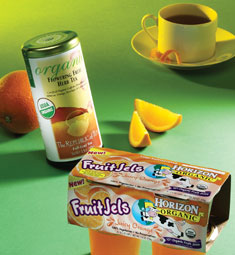
Interest in the organics market is valid. The average annual growth rate for organic products from 1998 to 2001 was 24.5%; in 2001, sales reached almost $9.3 billion (SPINS/OTA). The segment is predicted to reach $18 billion by 2005 (Reuters Business Insights). More than half (55%) of Americans have tried organic foods, according to a nationwide survey commissioned by Whole Foods Market, Austin, Texas, last fall. In 2001, 63% of consumers were buying organic products in mainstream grocery stores.
However, according to a more recent nationwide survey commissioned by Whole Foods Market, 60% of respondents (an average of regular, occasional and infrequent users) indicated they would likely eat organic products more often if they tasted better. The challenge for today's food processors is providing good-tasting products that comply with labeling requirements and meet ingredient functionality.
“The organic industry began with certification of commodity items and, slowly, the minor ingredients came aboard—we're now seeing more spices and flavors. As the buying power of the industry grows, it's worthwhile for flavor manufacturers to consider the production of organic products,” says Andrea Caroe, vice president of Certification Services for Quality Assurance International (QAI), San Diego, one of the largest organic certification organizations.
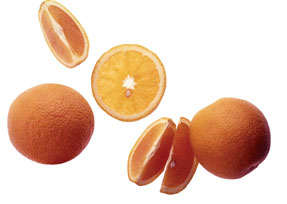
What the Law Says
October 21, 2002 marked the date the USDA National Organic Program's (NOP) food labeling standards went into effect. The final rule is published under Title 7 (Agriculture) in the Code of Federal Regulations, under Part 205 (7CFR205). Included in the rule is the National List of Allowed Synthetic and Prohibited Substances that specifies a section on allowed non-synthetic substances, some with restrictions (205.605(a)) for products labeled “organic” or “made with organic”The USDA's organic seal may only be displayed on organic agricultural products with at least 95% certified organic content. Food producers must be certified by a USDA-accredited certifying agent to sell, label, or represent their products according to the above designations.
Four categories of organic labels were approved, based on the percentage of organic content: 100% Organic, Organic, Made with Organic Ingredients, and Less than 70% Organic. (See Website Resources at end of article for USDA website detailing these regulations.)
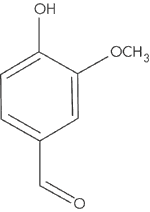
The “organic” designation is for agricultural products that contain at least 95% organic ingredients, excluding water and salt. The remaining 5% of ingredients must be organically produced, unless they are not commercially available as organic. If this is the case, the non-organic components may be either non-agricultural substances or agricultural products produced in compliance with the National List. More flavors are being listed as “certified organic”; however, it is still difficult to source organic raw materials and manufacture flavors under the restrictions set forth under the NOP rule.
“Made with organic ingredients” includes multi-ingredient products that contain at least 70% organically produced ingredients, excluding water and salt. The remaining ingredients must meet restrictions.
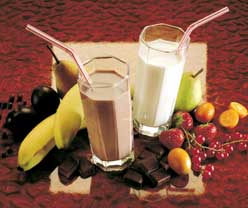
“Less than 70%” includes multi-ingredient products with less than 70% organically produced ingredients; organic content may only be listed on the product label's ingredient list. There are no restrictions on non-organic ingredients.
Flavoring suppliers are globally sourcing raw materials—both flavorings and their carriers—for USDA-certified organic foods and beverages.
What does this mean for those who add flavorings to their products? There are two basic categories of flavors—agricultural commodity flavors and non-agricultural based flavors. Natural flavors are allowed in organic products with restrictions. “When it's an agricultural commodity flavor that is commercially-available organic, you have to use it in order to make an 'organic' claim,” says Caroe. “If the formulation requires use of nonagricultural flavor, you would not be required to source that as organic first, because nonagricultural, natural flavor is allowed as non-organic by the National List” (7CFR205.605).
For example, in a cherry-flavored “certified organic” product, one would need to find an “organic cherry flavor,” if available. If it was not available, then a “natural flavor” could be used. Manufacturers have to demonstrate that all or some of the ingredients in the remaining 5% of the product are not available as “organic.”
According to the National List, under section 7CFR205.605(a)(9), non-agricultural, non-organic substances are allowed as ingredients that can be labeled as “organic” or “made with organic,” including “flavors, non-synthetic sources only, and must not be produced using synthetic solvents and carrier systems or any artificial preservative.”
Other non-synthetic ingredients allowed in this section include: acids such as microbially-produced citric acid, dairy cultures, certain enzymes and non-synthetic yeast that is not grown on petrochemical substrates and sulfite waste liquor.
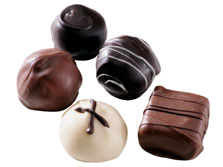
Flavoring Confusion
“Minor ingredients, such as natural flavors, often cause some confusion with regard to NOP rules,” states Steffen Scheide, organic savory flavorist for an ingredients supplier. Only 'natural flavors,' as defined in the CFR—not artificial or EU-Nature-Identical Flavors—can be considered in the development of organic foods.” While there is no FDA definition of “natural,” natural flavor definitions are covered under the FDA Code of Federal Regulations, 21CFR101.22.Natural flavors can be considered NOP compliant when used under the 95% rule, but only when their organic counterparts are not available. Flavors that are “certified organic” must comply under the NOP regulations. While only a handful of companies currently offer “certified organic” flavors, with the advent of organic raw materials, more will become available to food formulators.
Reviewing supplier specifications is a crucial first step for those producing or selling organic products, notes Mary Mulry, Ph.D., senior director of Product Development and Standards for Wild Oats Markets Inc., Boulder, Colo., and OMRI Board president. Vendors must supply a qualitative list of flavoring components, according to federal regulations. “Some flavor companies have a wait and see attitude when it comes to the organic market. However, I believe we'll see more available flavors in the organic sector as more flavoring companies embrace it as a real business opportunity.”
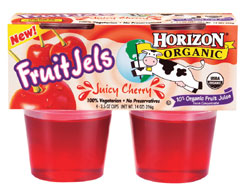
Sourcing an organic cherry flavor was a huge challenge at the time for Becky Nye, senior technologist, R&D and QA for Horizon Organic, Boulder, Colo., and her product development team. The company recently debuted Horizon Organic™ Fruit Jels in three certified organic flavors: cherry, orange, and strawberry.
“There was only one organic cherry flavor available, and it worked very well in our application,” recalls Nye. “It's tough when you have so many great natural fruit flavors with various nuances of ripe, green, candy-like, etc.; however, we were committed to finding an organic cherry flavor. We don't compromise on taste—if the flavor is not to our liking, we'll keep searching for alternatives.”
Searching for Solvents
Industrial flavors consist of minute quantities of flavoring raw materials that are dissolved in liquid solvents or dry carrier systems. Producing flavors without synthetic solvents and carriers (e.g., hexanes, methylene chloride, propylene glycol) that are not allowed, means using non-synthetic solvents such as water, alcohol from organic commodities (e.g., sugar cane), and non-synthetic glycerin.Supercritical fluids, such as supercritical carbon dioxide and water, can be used as extraction materials. These fluids have unique properties that are between those of a pure liquid and a gas. Residual solvents used in supercritical fluid extraction (SFE), an environmentally friendly process, can easily be removed. SFE is widely used in the decaffeination of coffee and tea. Essential oils and aroma materials can be extracted from spices using supercritical solvents.
“SFE is an approved process that has been encouraged by the organic community,” explains Caroe. A major drawback to SFE is a high capital investment for equipment. “While some SFE extracts are costly, they are NOP compliant,” adds Caroe.
For encapsulated flavors, carriers such as dextrins, corn syrup solids, tapioca and waxy maize starches, as well as gum Arabic, now are available as “certified organic.”
“We realize what suppliers need to make flavors, and we are doing our best to globally source raw materials for that market,” says Grace Marroquin, president of Marroquin International Organic Commodity Services Inc., Santa Cruz, Calif.
“There are still some gray areas for food manufacturers, even with the NOP regulations,” states Craig Bair, Ph.D., president of Food Solutions Inc., Greensboro, N.C., consultants to companies desiring to enter the organic food segment. Although it can be frustrating, most manufacturers rely upon their certification agency to review and approve their processes and products, he notes.
For companies wanting to grab opportunities in the growing organics prepared foods market, such extra steps will be necessary.
Website Resources
www.ams.usda.gov/nop— USDA website detaining regulations on ingredients for organic productswww.qai-inc.com/— Quality Assurance International
wholefoods.com/company/pr_organicsurvey.pdf— Whole Foods Market Survey 10/17/02
www.omri.org— Organic Materials Review Institute
www.wildoats.com— Wild Oats Markets Inc.
marroquin-organics.com— Marroquin International Organic Commodity Services Inc.
www.horizonorganics.com— Horizon Organic
www.honesttea.com— Honesty Tea
www.ota.com/— Organic Trade Association
foodsolutionsinc@cs.com— Food Solutions Inc.
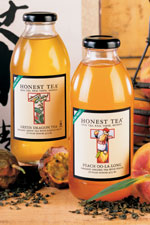
Sidebar: Oor-gan-ic Oo-la-long
“We prefer flavorings from natural sources such as peppermint leaves, but if we don't get the flavor we want, we try to find true-tasting flavors,” explains Seth Goldman, president and TeaEO of Honest Tea, Bethesda, Md. The company is rolling out two new bottled “certified organic” teas this year: Peach Oo-la-long and Green Dragon. Ingredients in Peach Oo-la-long tea includes: organic peach purée, natural peach flavor, and malic acid.“We first tried some excellent peach flavors, but they contained propylene glycol,” says Goldman. After some searching, as “certified organic” peach flavors were not available, Goldman found what he wanted in a natural flavor. “Someone remarked that the peach flavor tastes so fresh that he could feel the fuzz when he tasted our peach tea,” says Goldman. The peach purée and flavoring complement each other, he added.
Malic acid, a predominant acid in peaches, helped bring out the flavor. However, malic acid is not on the National List, so Goldman petitioned the National Organic Standards Board (NOSB) for permission to have it added. The acid is approved as an ingredient in organic foods in other countries, he notes, so he is hopeful that the petition will be approved. In the meantime, the company has been given an extension to use the ingredient until a decision is made.